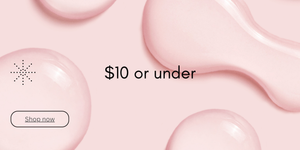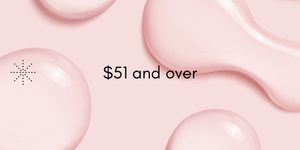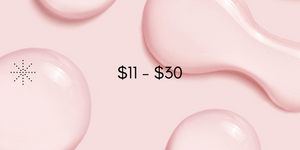All About Korean Face Masks – How, When, and Why You Should Use One

Korean face masks have taken the skincare world by storm, offering a variety of benefits for different skin concerns. Whether you're looking to hydrate, brighten, control acne, or target anti-aging, there’s a Korean face mask perfect for your needs. Here's a complete guide to help you understand how, when, and why you should use one.
How Do Korean Face Masks Fit Into My Skincare Routine?
While each person's skin is unique, a general skincare routine with face masks can follow these steps:
1. Cleanse – Begin by washing your face to remove impurities.
2. Clay/Charcoal Mask – Use a clay mask if you have oily or acne-prone skin.
3. Tone – Apply a toner to balance the skin’s pH and prep it for the mask.
4. Sheet Mask – Place a sheet mask on your face to lock in moisture and deliver targeted benefits.
5. Moisturize – Follow up with a good moisturizer to seal in the goodness.
Which Korean Face Mask is Best for My Skin?
Korean face masks come in different varieties, and each type offers specific benefits:
Sheet Masks
Sheet masks are the most popular and effective type. Made from materials like cotton, hydrogel, and plant fibers, they fit snugly on the skin and deliver a concentrated dose of ingredients like hydrating, soothing, or brightening agents.
Clay Masks
Great for oily and acne-prone skin, clay masks work to pull impurities and excess oil from the pores, helping to prevent breakouts and reduce pore size.
Peel-Off/Modeling Masks
These masks are perfect for those looking for intense hydration and smooth skin. The peel-off formula allows for a satisfying removal process while leaving the skin nourished.
Bubble Masks
Bubble masks use carbonated ingredients that create bubbles on the skin, helping to clear impurities from the pores. They are a fun way to achieve clearer, smoother skin.
Wash-Off Masks/Sleeping Masks
Wash-off masks are typically used for short-term hydration, while sleeping masks can be left on overnight to deeply nourish and rejuvenate the skin. Both provide intense moisture and hydration.
Eye and Lip Masks
Specialized masks for the eyes and lips help reduce puffiness, smooth fine lines, and provide deep hydration to these delicate areas.
Acne Patches
These patches are a quick and effective way to target pimples. They help absorb the impurities and calm the affected area overnight.
How Often Should I Use a Face Mask?
Hydrating sheet masks can be used daily, but masks with exfoliating or anti-aging properties should be used 1-3 times a week to avoid irritation. Pay attention to how your skin reacts to find the right frequency.
How Long Should I Leave a Face Mask On?
Most face masks, particularly sheet masks, should be left on for 15-25 minutes. Leaving a mask on for too long can cause it to absorb moisture back from the skin, reducing its effectiveness. Always follow the instructions on the product packaging for best results.
Can I Reuse a Sheet Mask?
Sheet masks are designed for single-use only. However, any leftover essence in the packet can be used on your arms, neck, or elbows for extra moisture.
Do Face Masks Have Expiration Dates?
Yes, face masks have an expiration date, which can usually be found on the packaging. If you don't see a date, it may list the manufacturing date. Typically, unopened masks last between 24-36 months.
Addicted to Face Masks?
If you love using face masks and want to explore new options, AU Beauty Bazaar offers a wide selection of Korean face masks to enhance your skincare routine and maintain that beautiful, glowing skin.
FAQs (FAQs About Korean Face Masks)
Korean face masks are designed to deliver concentrated skincare ingredients directly to your skin. Whether in sheet form, clay, or peel-off, they lock in moisture and nutrients, helping to address various skin concerns such as dryness, acne, or signs of aging.
Yes, Korean face masks are available in a variety of formulations that cater to all skin types, from dry and sensitive to oily and acne-prone skin. It's important to choose the right type of mask for your skin's needs to get the best results.
For most people, using a hydrating sheet mask daily is fine. However, masks with stronger active ingredients like clay, exfoliating acids, or anti-aging properties should be used 1-3 times a week to prevent irritation. Pay attention to your skin’s response and adjust frequency accordingly.
No, it’s not recommended to leave a sheet mask on overnight. Most sheet masks should be used for 15-25 minutes. Leaving it on for too long can cause it to absorb moisture back from your skin, reducing its effectiveness.
Sheet masks are designed to deliver hydration and active ingredients, while clay masks are primarily used for purifying the skin, absorbing excess oil, and helping to clear pores. Choose a sheet mask for hydration and a clay mask for acne-prone or oily skin.
Yes, Korean face masks are generally safe for regular use, but it's important to choose the right mask based on your skin type. Sensitive skin types may need to limit the use of stronger masks and focus on gentle, hydrating options.
Korean face masks offer a wide range of benefits, such as deep hydration, acne control, brightening, soothing irritated skin, and anti-aging effects. They help target specific skin concerns by delivering concentrated nutrients directly to your skin.
Yes, there are many Korean face masks formulated specifically for sensitive skin. Look for masks that are gentle, fragrance-free, and designed to soothe and hydrate the skin without causing irritation.
To choose the best Korean face mask, consider your skin's needs: For dryness, go for hydrating sheet masks. For acne, use clay masks or acne patches. For brightening, opt for masks with vitamin C or brightening ingredients. For aging concerns, select masks with anti-aging properties like collagen or peptides.
Yes, you can layer different types of masks depending on your skin’s needs. For example, you can use a clay mask to detoxify and a sheet mask afterward to hydrate and lock in moisture. Just make sure to follow the proper order—typically, cleansing, toning, mask application, and then moisturizing.










Really enjoyed this guide – super helpful breakdown of when to use sheet masks vs clay or sleep masks. If you’re interested in layering your routine with something that nourishes after masking, I’d recommend checking out the Korean Peptide Moisturizer at OOTD Beauty — it helps lock in all the good stuff while keeping skin firm and hydrated. https://ootdbeauty.com/
Wonderful guide—so informative and easy to follow! I love how comprehensive the mask categories and usage tips are. Now I feel confident choosing the perfect Korean sheet mask for my skin needs. Glutathione Sheet Mask | Glutathione Face Mask</a
Leave a comment